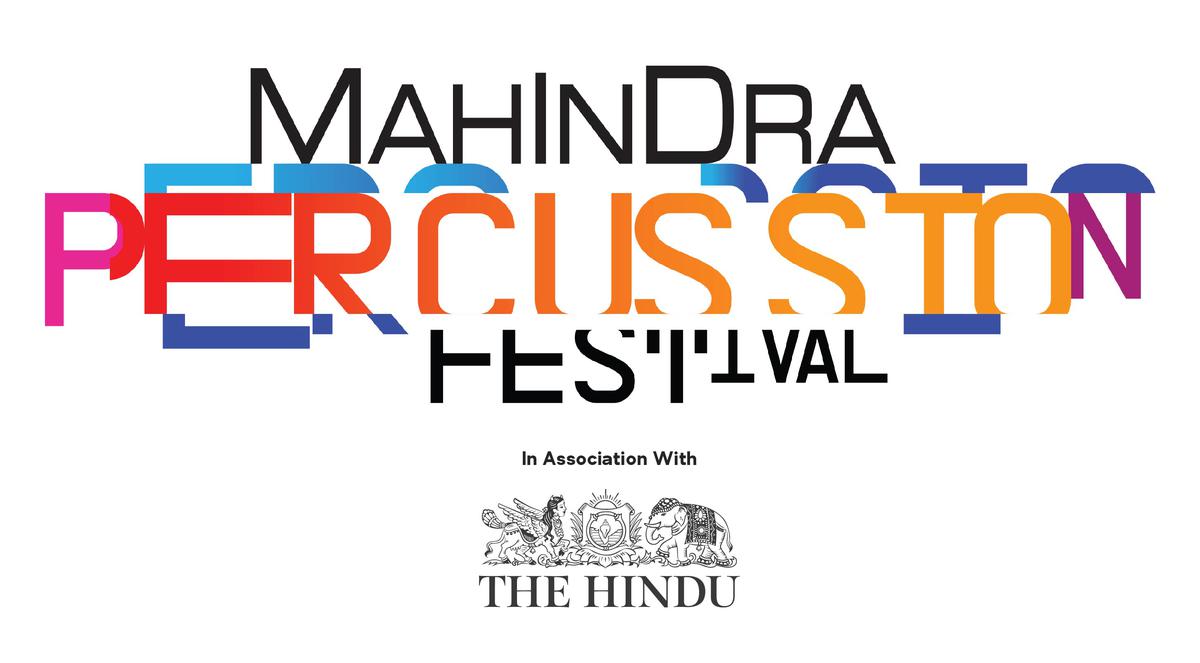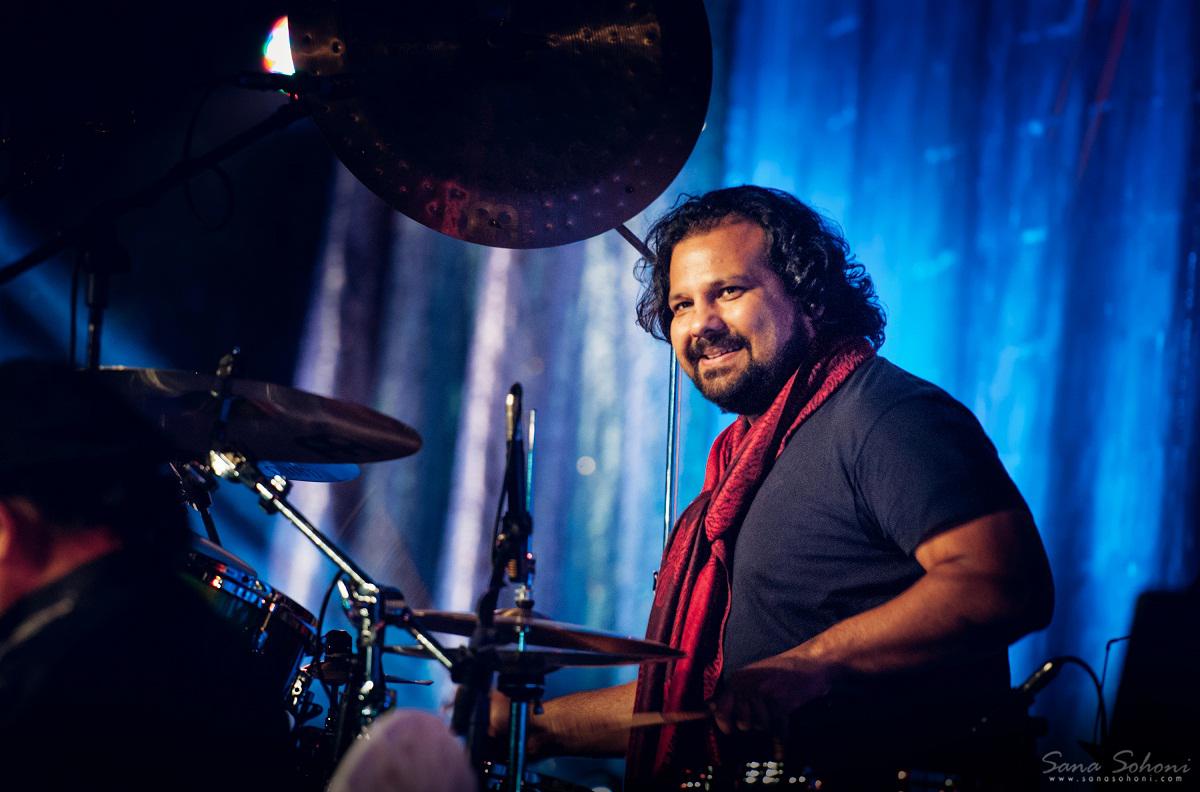The Mahindra Percussion Festival will drum up a new rhythm in Bengaluru

Ranjit Barot is excited about his dual role – as a curator and performer
| Photo Credit: VAIBHAV KAPADI
When the Mahindra Percussion Festival was announced, there was cheer but also surprise. How could a music festival cater solely to percussion instruments from India and the world, when traditionally these have been stereotyped as accompanying elements in Indian classical, fusion and western music?
But the Mahindra Percussion Festival’s line up of artists speaks for itself. The day-long gathering will host artistes across styles, music cultures and countries. It includes Mumbai’s Ranjit Barot (also the festival curator), renowned percussionist A. Sivamani, kanjira exponent V. Selvaganesh, Armenian-origin American multi-instrumentalist Arto Tunçboyaciyan and Spanish group Paquito Ensemble. Then, there are the drummers’ group Pulse Conversations – Gino Banks, Vinayak Pol and Jai Row Kavi, Mumbai-based konnakol ace Viveick Rajagopalan’s Ta Dhom Project and Kerala’s Chemmeen Band ,featuring Aattam Kalasamithi.

When interviewing some of the artistes performing at the festival, a common sentiment came up from the adjacent world of blues. Ranjit Barot quoted the late American blues great Buddy Rich: “A great band with an average drummer is an average band and an average band with a great drummer is a great band”. Vinayak Pol added during his chat, “As it’s rightly said, ‘If you got a bad drummer, your band sounds immature’.”
Ranjit Barot, the celebrated man behind the kit and a composer-producer in his own right, is part of the Mahindra Percussion Festival in a dual role. “It’s been wonderful to get this opportunity to curate a festival such as this. It allows one to imagine all sorts of musical possibilities, combinations of talent and also to reconnect with fellow musicians, both here and abroad,” he says.
A. Sivamani
| Photo Credit:
Special Arrangements
To the public eye, percussion and drumming may often appear as secondary or supporting instruments, but Ranjit disagrees. He points to traditions like jazz and jazz-fusion, where the drummer is considered one of the most important parts of the ensemble, compared to a guitarist or a lead singer. He explains, “It’s a perception thing, and largely on the part of the audience. The more educated you get musically, the more you appreciate each member’s contribution to the overall sound .”
Sivamani paints a more nuanced picture as well about the due that percussion has been given in India. Recalling the times he performed with the late singing legend S.P. Balasubrahmanyam, Sivamani says there was always a 15-minute section in each concert where it was the percussionist’s time to shine. “My set up was in the corner as part of the band. There started my passion for my solo percussion collection and I started seeing percussion greats such as Billy Cobham, Trilok Gurtu sir, and Zakir Hussain sir. I began collecting percussion instruments and started my own solo concerts,” he says. Sivamani points to the likes of younger musicians like Gino Banks, who have made the style stand out.
Kanjira exponent Selvaganesh
| Photo Credit:
Vedaraman
It wasn’t always like this. Sivamani notes how at Carnatic concerts decades ago, when the singer would give way to the percussionist, people would walk away. “But now, I am seeing it all change,” he adds.
While Mahindra Percussion Festival may be putting the conversation back in the spotlight, there have been several events over the years which have kept Indian rhythmic and percussion instruments at the centre. Sivamani points to the Taal Vadya Utsav in Mumbai from the 1980s, started by tabla maestro Zakir Hussain and Jazz India, while we know of more recent events like the Dumru Percussion Festival in Pune, the erstwhile World Percussion Festival in New Delhi, Women of Rhythm and Mumbai Drum Day.
The last one is founded by Gino Banks. “The three of us (Vinayak and Jai Row) have shared a history of playing and practicing together on individual kits endlessly for hours. That’s when it occurred to us to compose something on a drum set and offer an experience that hadn’t been tried before without having melody instruments around.”

Gino Banks
| Photo Credit:
Special Arrangement
Kanjira expert V. Selvaganesh’s presence at the Mahindra Percussion Festival offers a glimpse into his lineage and generational pursuit of keeping percussion traditions in focus in India. He says the kanjira is now recognised as a solo instrument. “In fact, most of the drummers in America now carry a kanjira, thus establishing its international recognition,” he adds. Like Ranjit Barot crediting guitar great John McLaughlin for educating audiences about the importance of a drummer in his band, Selvaganesh too points to the efforts of ghatam maestro and his father Vikku Vinayakram with jazz-fusion band Shakti to break barriers. “Our duty is to take these instruments to the next level of recognition and innovation,” he says.
At the Mahindra Percussion Festival, we’ll see them shoulder this responsibility together. Selvaganesh promises an interactive performance, Vinayak says they will team up with Ta Dhom Project and Ranjit will jam with Tunçboyaciyan and the flamenco guitarist Jose Quevedo ‘Bolita’ and dancer Antonia Molina ‘El Choro’. Ranjit hopes that his role as curator continues, as there’s a lot to bring to the forefront through the festival. “There’s much to be explored in our own country. There are new and upcoming artistes and many stalwarts of Indian classical and tribal percussion who need to be featured. I hope we get to do that,” concludes Ranjit.
For all the latest Entertainment News Click Here
For the latest news and updates, follow us on Google News.
